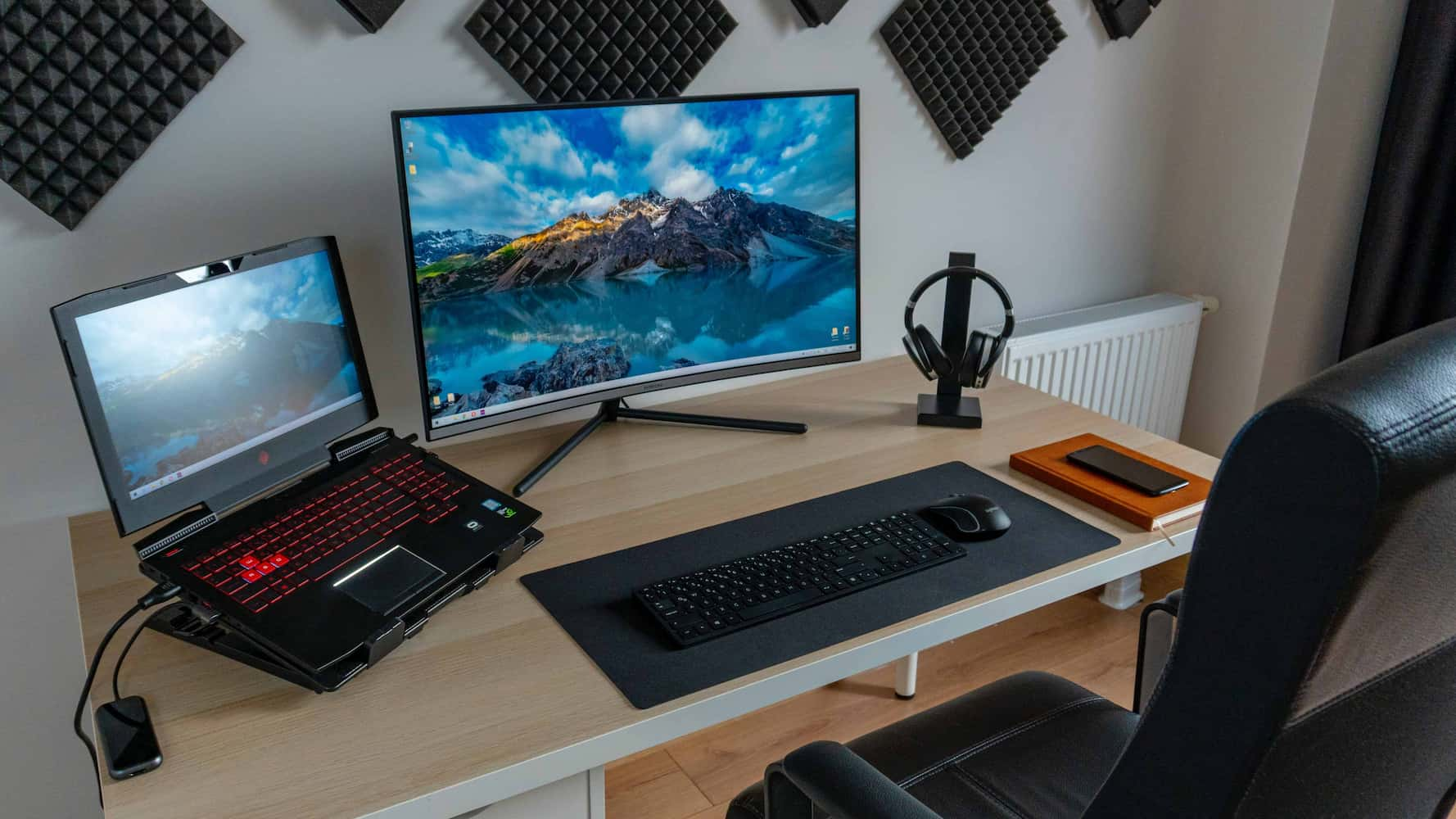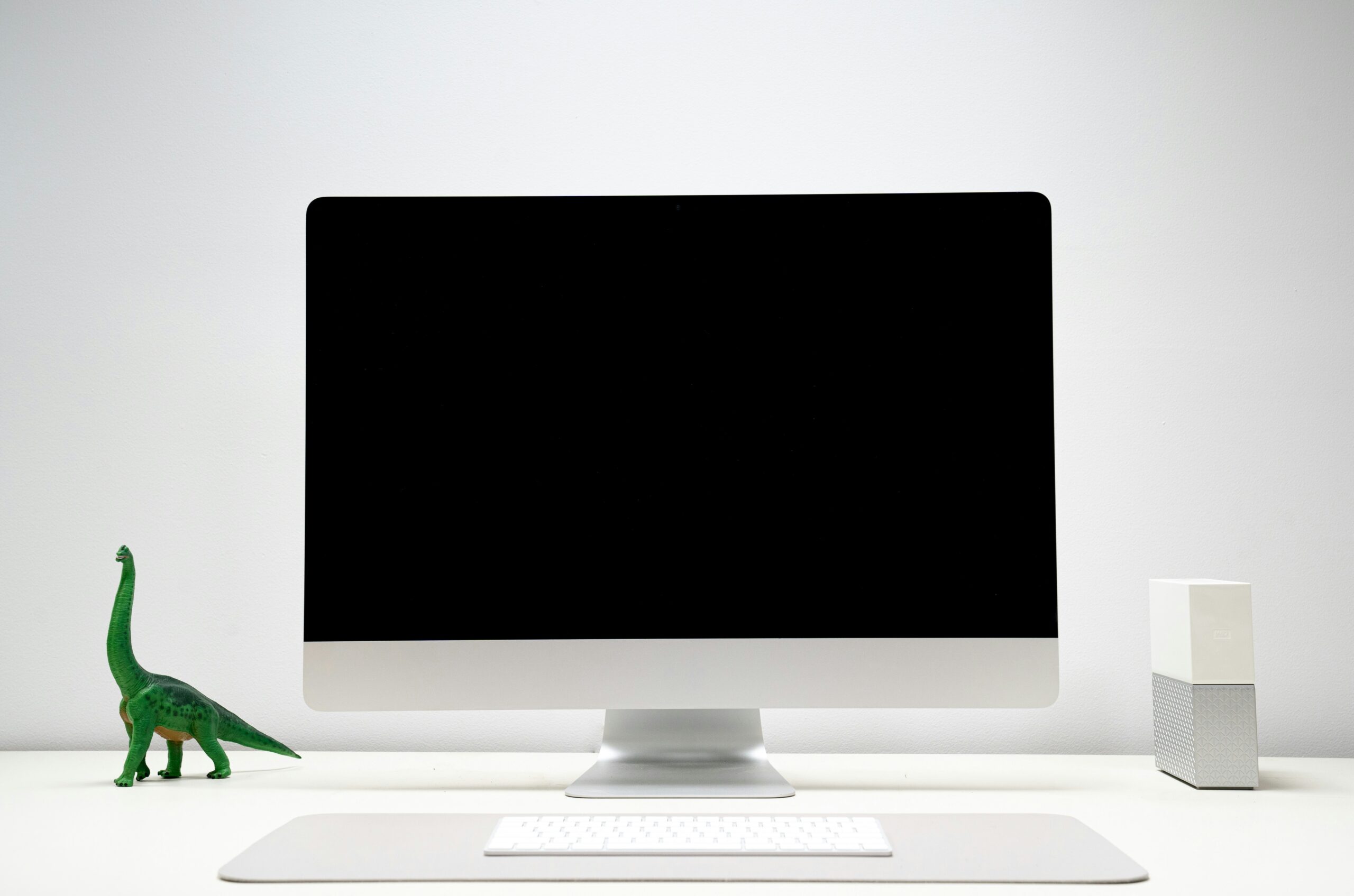
In today’s fast-paced digital world, it’s essential to maximize your productivity, whether you’re working from home, gaming, or multitasking. A dual-screen setup can make a huge difference, and the process of connecting a computer monitor to your laptop is simple. How to connect computer monitor to laptop With this setup, you’ll have a bigger display or an extra screen to work with, giving you the advantage of getting more done in less time.
Table of Contents
Section 1: Preparing to Connect Your Monitor
Check Laptop and Monitor Compatibility
Before you start connecting your laptop to a monitor, it is absolutely essential to check the compatibility of the ports on both devices. You’ll come across common ports such as HDMI, VGA, DisplayPort, and USB-C/Thunderbolt 3. Be sure to have the required cables or adapters for the specific ports on your laptop and monitor to guarantee a smooth and hassle-free connection. Don’t allow incompatible ports to hinder you from fully maximizing your display setup!
Gathering Necessary Equipment–How to connect computer monitor to laptop
Please ensure that you have all the essential equipment before setting up your monitor. You will need an HDMI cable for HDMI connections, a VGA cable for VGA connections, and a DisplayPort cable for DisplayPort connections. If your laptop has USB-C but your monitor does not, you will also need a USB-C to HDMI/DisplayPort adapter. Additionally, consider investing in a docking station, as it can greatly assist in connecting multiple peripherals. Having all the necessary equipment will undoubtedly make the setup process much smoother.
Section 2: Connecting the Monitor
Using HDMI
Now, let’s discuss how you can connect your monitor using an HDMI cable. This is a simple and straightforward process that can really elevate your viewing experience. All you have to do is plug one end of the HDMI cable into the HDMI port on your laptop and the other end into the HDMI port on your monitor. Then, turn on your monitor and ensure it’s set to the correct HDMI input. Finally, adjust the settings on your laptop to configure the monitor as needed. It’s a fast and efficient way to enhance your display setup and make the most of your monitor. Trust me, you’ll be glad you did it!

Using VGA
Are you tired of straining your eyes to see your laptop screen? It’s time to upgrade and connect your laptop to a monitor using a VGA cable! All you have to do is plug one end of the VGA cable into your laptop and the other end into the monitor. Don’t forget about the audio – you may need an extra cable for sound or use your laptop’s speakers. Once everything is connected, turn on the monitor and adjust the display settings on your laptop. It’s as simple as that! Say goodbye to small screens and hello to a larger, clearer display.
Using DisplayPort
Please make sure to connect the DisplayPort cable from your laptop to the monitor. It’s important to power on the monitor and select the DisplayPort input. Then, you’ll need to adjust your laptop’s display settings to ensure everything is working properly. This simple process will allow you to effectively use the DisplayPort for your monitor.
Using USB-C/Thunderbolt 3
Using a USB-C/Thunderbolt 3 connection is incredibly simple and straightforward. All you have to do is plug one end of the USB-C cable into your laptop’s port and the other end into the monitor. If the monitor doesn’t have a USB-C port, just use an adapter. Power on the monitor, select the USB-C input, and configure your laptop’s display settings. It’s as easy as that!
Using a Docking Station
Using a docking station is a breeze! Just connect it to your laptop using a USB-C or compatible port, then plug the monitor into the docking station. Power on the monitor and adjust the display settings on your laptop for maximum productivity. It’s as simple as that! Get ready to supercharge your work with a docking station.
Section 3: Configuring Display Settings
Adjusting Display Settings on Windows
Now, let’s discuss how to customize your display settings on both Windows and macOS. If you’re using Windows, simply right-click on your desktop and select ‘Display settings’ to access the options. From there, you can choose to extend or duplicate your display and adjust the resolution and orientation settings to fit your needs.
On the other hand, if you’re using macOS, navigate to System Preferences > Displays to access the display settings. You can then choose to extend your desktop or mirror displays and arrange them to your liking.
If you have multiple monitors, ensure they’re connected properly and then configure the arrangement and settings for each monitor in your operating system’s display settings. By following these straightforward steps, you can easily customize your display settings on both Windows and macOS to optimize your viewing experience.
Section 4: Troubleshooting Common Issues
Yes, if you’re experiencing issues with your monitor, don’t worry! We’ve got some troubleshooting tips for you. If you’re seeing no signal on your monitor, start by checking all your connections to make sure they’re securely in place. Also, make sure the input source on your monitor is set to the correct setting.
If you’re having resolution problems, try adjusting the display resolution settings in your operating system. And don’t forget to keep your graphics drivers up to date.
If your monitor is not being detected, try restarting your laptop as this sometimes resolves detection issues. Additionally, make sure all relevant drivers are updated and check that all cables and adapters are functioning properly. With these troubleshooting tips, you’ll have your monitor working smoothly in no time.
Additional Resources
If you’re looking for the best monitors for your laptop in 2024, look no further! Our comprehensive guide will help you find the perfect option for your needs. And once you’ve found the right monitor, it’s crucial to choose the right cable for optimal performance. Our detailed article will walk you through the process, ensuring you make the best choice. And if you prefer visual learning, we’ve got you covered with a helpful video tutorial on our YouTube channel. Get all the information you need to enhance your laptop setup with the perfect monitor and cable. Trust us to provide the best guidance for your tech needs.
FAQs
Q: Can I connect more than one monitor to my laptop?
Of course! You can absolutely connect more than one monitor to your laptop. It’s completely possible and can greatly enhance your workspace. You may need a docking station or additional adapters depending on your laptop’s ports, but rest assured that multiple monitors can be connected for a more efficient setup.
Q: Why is my monitor not displaying in full resolution?
If you’re having trouble with your monitor not displaying in full resolution, it’s crucial to take action. Start by checking your display settings and ensure that the resolution is set to the monitor’s native resolution. If that doesn’t fix the problem, consider updating your graphics driver, as this can also make a significant difference. Don’t settle for anything less than the best resolution for your monitor! It’s essential to make sure you’re getting the best quality display possible.
Q: Do I need a special cable for 4K resolution?
Absolutely, you definitely need a special cable for 4K resolution. It’s crucial to use an HDMI 2.0, DisplayPort 1.2, or a USB-C cable with proper support to ensure the best 4K viewing experience. Don’t compromise on the quality of your viewing experience. Make sure you have the right cable for the job.
Q: How do I switch between extended display and duplicate display?
Are you tired of struggling to figure out how to switch between extended display and duplicate display? Well, the solution is simple! For Windows users, just use the Win + P shortcut to easily toggle between display modes. And for macOS users, just go to System Preferences > Displays and make the change. It’s quick, it’s easy, and it’s the perfect solution for all your display needs. So why wait? Switch between display modes with ease and efficiency!
Conclusion
In conclusion, integrating a dual-screen setup by connecting a computer monitor to your laptop can significantly enhance your productivity across various tasks. Whether you’re working remotely, gaming, or managing multiple projects, the added screen real estate offers substantial benefits. This guide has provided clear steps for setup and troubleshooting, ensuring a smooth process from start to finish. By leveraging this dual-screen configuration, you can streamline workflows, increase efficiency, and ultimately achieve more in your daily endeavors. Embrace the opportunity to optimize your workspace and elevate your productivity today.
Also read best monitor for watching movies
Hey there, tech enthusiasts! If you’re in need of a comprehensive guide on how to connect a computer monitor to your laptop, look no further. Sarah, a seasoned freelance writer with over 10 years of experience in the technology industry, has curated a detailed blog post just for you. She specializes in creating easy-to-follow guides and tutorials to help you maximize your gadgets. And when she’s not writing, Sarah enjoys hiking and exploring new tech gadgets. So, if you’re ready to elevate your tech game, be sure to check out her guide for troubleshooting tips and additional resources. You definitely won’t want to miss it!



